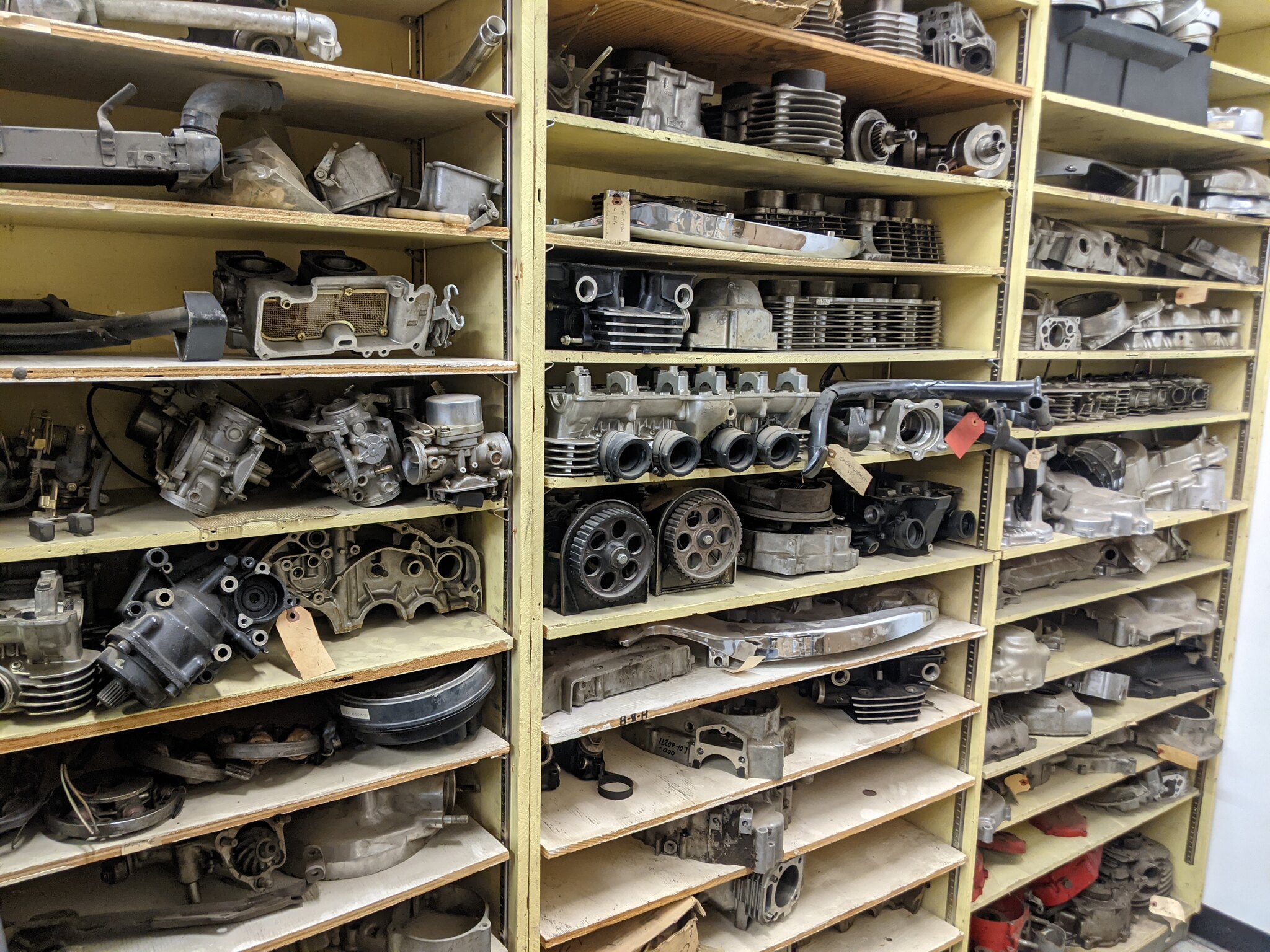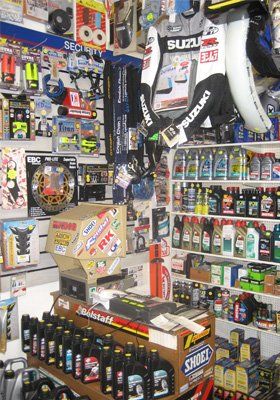Store the most effective MX Parts NZ for Your High-Performance Bike
Store the most effective MX Parts NZ for Your High-Performance Bike
Blog Article
Recognizing the Crucial Parts of a Bike: A Comprehensive Overview for Lovers
For bike lovers looking to boost their riding experience and ensure their bikes run smoothly, comprehending the vital parts of a motorcycle is extremely important. Each component, from the engine's intricate functions to the important role of the stopping systems, not just impacts performance but also security and convenience.
Engine Parts

The camshaft plays an important function in regulating the timing of the engine's shutoffs, making sure the specific opening and closing necessary for efficient gas and air intake, as well as exhaust expulsion. This timing is crucial to maintaining ideal engine efficiency and efficiency. Furthermore, the carburetor or fuel injection system, depending upon the motorcycle model, is responsible for blending air with fuel in the correct ratio for burning.
The cooling system, either air or liquid-based, functions to keep the engine's temperature within functional restrictions, avoiding getting too hot and guaranteeing long life - moto parts nz. Each part, diligently created and incorporated, adds to the smooth procedure of the engine, defining the bike's power result and general efficiency
Transmission System
Important to the motorcycle's performance, the transmission system ensures reliable power transfer from the engine to the wheels. This system makes up a number of crucial components, consisting of the clutch, gearbox, and final drive, each playing a crucial function in equating the engine's power into activity. The clutch, generally run by a hand bar, serves to disengage the engine and engage from the transmission, permitting smooth gear modifications and regulated acceleration.
The gearbox, commonly described as the transmission proper, includes a collection of equipments that motorcyclists can manually move through to readjust the bike's rate and torque outcome. These equipments are organized in a series that makes it possible for the motorbike to accelerate efficiently and preserve ideal engine performance across different rates. The majority of bikes utilize a consecutive transmission, needing the biker to shift equipments in a fixed order.
Braking Systems
While comprehending the transmission system is crucial to taking advantage of a motorbike's power, similarly vital is the ability to control and stop that power effectively, which is where braking systems enter play. Brakes are crucial for safety and security and efficiency, offering the rider with the essential control to browse numerous terrains and conditions. Normally, motorcycles include 2 kinds of stopping systems: disc brakes and drum brakes.
Disc brakes are more prevalent in modern-day bikes as a result of their exceptional performance. They contain a brake disc, caliper, and pads. When triggered, the caliper squeezes the brake pads against the spinning disc, converting kinetic energy into heat, thus reducing the wheel. This system offers better heat dissipation, consistent efficiency, and boosted quiting power, specifically in wet problems.
On the other hand, drum brakes, though much less common, are still found in some motorbikes. They work by pushing brake shoes against the internal surface of a drum connected to the wheel. While normally less reliable in warm dissipation and quiting power, drum brakes are less complex and a lot more economical.
Understanding these stopping systems' nuances allows riders to preserve their motorbikes correctly and value the design that makes sure secure and efficient quiting.
Suspension and Guiding
Suspension and guiding systems are essential parts that substantially affect a motorbike's handling and adventure convenience. The suspension system, including forks at the front and shock absorbers at the rear, absorbs roadway irregularities, boosting security and control. Front forks, inverted or generally telescopic, compress and rebound to mitigate effects, while back shock absorbers keep tire call with the roadway, important for grip and safety and security.
Guiding, focused around the handlebars, attaches the cyclist to the motorcycle's directional control. The guiding head bearings guarantee smooth procedure, enabling accurate ability to move. Correct alignment and maintenance of these bearings are critical for foreseeable guiding feedback and decreasing rider fatigue.
The suspension's adjustability is one more vital facet; preload, damping, and rebound setups enable customization to fit numerous Click Here riding problems and styles. This flexibility is necessary for enhancing efficiency, whether navigating city roads or dealing with sturdy trails. Innovations like digital shock absorber supply real-time modifications, enhancing ride quality throughout diverse surfaces.

Electrical Solutions
After making sure a smooth and controlled experience with effective suspension and guiding systems, attention official site transforms to the electrical systems, a critical element of modern bikes. These systems play a vital role not only in beginning the engine however additionally in powering different components that improve the capability and security of the motorcycle.
At the heart of a motorbike's electric system is the battery, which stores electric power required for beginning the engine and powering complementary systems - motocross gear. The generator or generator, paired with the rectifier-regulator, ensures the battery continues to be billed while the motorcycle is in procedure, converting power right into electric energy and keeping voltage levels
The ignition system, another critical part, is liable for sparking the air-fuel blend in the engine's cyndrical tubes. Modern motorbikes commonly utilize a digital ignition system, providing better efficiency and integrity contrasted to conventional systems.
Lights systems, consisting of headlights, tail lights, and indications, are additionally vital, guaranteeing visibility and safety and security for the cyclist. Additional electronic elements such as sensing units, control units, and shows add to innovative attributes like gas shot administration, anti-lock braking systems (ABS), and digital control panels, better enhancing the riding experience.
Verdict
An extensive comprehension of a bike's essential elements, including the engine, transmission system, stopping systems, suspension, guiding, and electrical systems, is important for fanatics aiming to optimize security, convenience, and efficiency. Proficiency of these elements permits informed choices concerning maintenance and upgrades, inevitably enhancing the riding experience. By integrating this understanding, cyclists can guarantee their motorbikes operate at peak efficiency and integrity, thereby making the most of both satisfaction and long life of their vehicles.
For motorbike enthusiasts looking to boost their riding experience and guarantee their bikes run efficiently, recognizing the crucial components Check This Out of a motorbike is critical.Integral to the bike's functionality, the transmission system makes certain reliable power transfer from the engine to the wheels.While understanding the transmission system is crucial to using a bike's power, just as important is the ability to manage and quit that power efficiently, which is where stopping devices come into play. Normally, motorbikes include 2 kinds of braking systems: disc brakes and drum brakes.
A detailed understanding of a motorcycle's crucial elements, consisting of the engine, transmission system, braking devices, suspension, steering, and electric systems, is important for enthusiasts aiming to maximize performance, convenience, and security.
Report this page